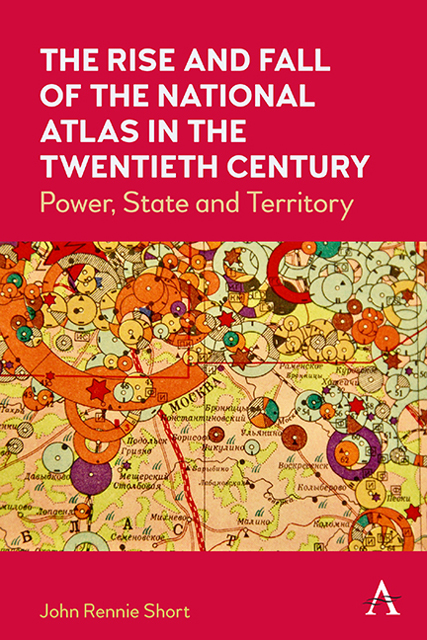Book contents
- Frontmatter
- Contents
- List of Figures
- List of Tables
- Acknowledgments
- 1 Introduction
- 2 The Early National Atlas
- 3 Cartographic Anxieties and the Emergence of the Modern National Atlas
- 4 Cartographic Ruptures and the National Atlas
- 5 National Atlas, Global Discourses
- 6 The Physical World of the National Atlas
- 7 The Social World of the National Atlas
- 8 The End of the National Atlas?
- Notes
- Appendix: National Atlas Bibliography
- Index
4 - Cartographic Ruptures and the National Atlas
Published online by Cambridge University Press: 09 December 2022
- Frontmatter
- Contents
- List of Figures
- List of Tables
- Acknowledgments
- 1 Introduction
- 2 The Early National Atlas
- 3 Cartographic Anxieties and the Emergence of the Modern National Atlas
- 4 Cartographic Ruptures and the National Atlas
- 5 National Atlas, Global Discourses
- 6 The Physical World of the National Atlas
- 7 The Social World of the National Atlas
- 8 The End of the National Atlas?
- Notes
- Appendix: National Atlas Bibliography
- Index
Summary
The national atlas often emerged after revolutionary ruptures, imperial collapses and successful colonial struggles, playing an important part after political disjuncture and social disruption, giving shape and form (quite literally!) to new nation-states. The national atlas gave expression to emergent national identities, helped create/recreate national communities, recombined linkages worldwide and expressed changed relations to an ever-widening world.
Cartographic Declarations of Independence
The usual unfolding is when a nation-state emerges, then that new state organizes its cartographic expression, very often in the form of a national atlas. In some cases, however, the national atlas predates the emergence of the new nation-state. Let's consider two examples of a national atlas as a declaration of independence and the national atlas as a “premature birth certificate.”
Finland
An early example is the first Atlas öfver Finland (Atlas of Finland), printed in 1899, published in Finnish and Swedish (see Figure 1.1). This atlas has legitimate claims to be the first modern national atlas in the world. A second edition was published in 1910 in Finnish, Swedish and French (see Figure 1.2). At the time of both editions, Finland was not yet an independent country but under the rule of the Russian tsar. Previously, it was under the control of the Swedish Empire. From the thirteenth century to 1809, Finland came under Swedish domination, and Swedish became the language of the Finnish elite. The language of higher education also was conducted in Swedish, even after Finland became part of the Russian Empire.
After the 1808–9 Finnish war between Sweden and Russia, most of Finland was ceded to the Russian Empire as the semiautonomous Grand Duchy of Finland. This was the predecessor state of modern Finland. Throughout much of the nineteenth century, Finnish cultural expression blossomed, built on its unique language, the Lutheran Church and its own folkloric traditions. Finland was part of the Tsarist Empire but a very distinctive part. Finnish cultural expression strengthened during periods of greater autonomy from Russian control. Finnish, spoken by the peasantry, became a vehicle for nationalism. It was promoted by the Swedish-speaking elite to forge a link of national identity with the masses and by the Russian authorities to separate Finns from the local Swedish-speaking elite and from the neighboring Swedish state.
- Type
- Chapter
- Information
- The Rise and Fall of the National Atlas in the Twentieth CenturyPower, State and Territory, pp. 31 - 58Publisher: Anthem PressPrint publication year: 2022

